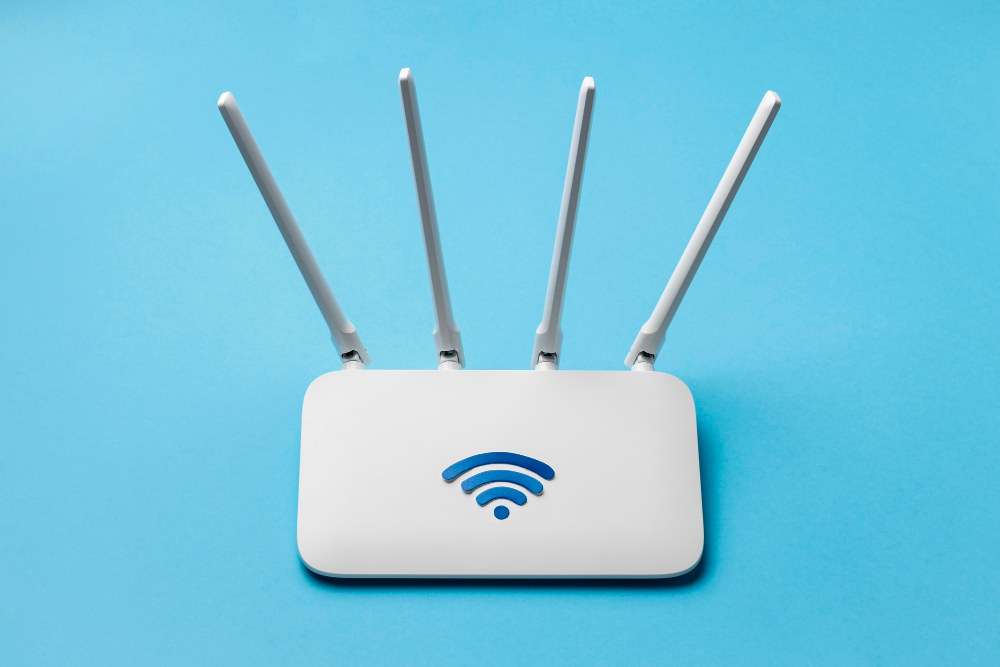A well-configured Wi-Fi network ensures seamless communication, enhances productivity, and supports a variety of critical tasks. However, setting up a robust Wi-Fi network in your office or small business requires careful planning, the right equipment, and adherence to best practices to meet current and future demands.
This guide covers essential tips for creating a high-performing and secure Wi-Fi network for your office or small business.
Why a Solid Wi-Fi Network Matters for Businesses
A dependable Wi-Fi network isn’t just a convenience; it’s a necessity for modern business operations. Here’s why:
- Enhanced Collaboration: Tools like video conferencing, shared cloud drives, and project management software rely on strong internet connectivity.
- Customer Experience: Offering guest Wi-Fi enhances client satisfaction and fosters a positive impression.
- Operational Efficiency: From point-of-sale (POS) systems to inventory management software, uninterrupted connectivity is critical for smooth operations.
- Scalability: A good network ensures that as your business grows, your connectivity remains strong and scalable.
Step-by-Step Guide to Setting Up a Wi-Fi Network
1. Assess Your Business Requirements
Before investing in equipment or contacting your internet service provider (ISP), evaluate your business’s unique needs:
- Number of Devices: Account for all devices, including laptops, smartphones, tablets, IoT devices, and printers.
- Bandwidth Requirements: Identify tasks that consume significant bandwidth, such as video streaming, VoIP, and large file uploads.
- Office Layout: Determine the coverage area and identify potential obstacles like walls or metal objects that can affect signal strength.
2. Select the Right Equipment
Choosing the right hardware lays the foundation for a reliable network:
- Router: Opt for a business-grade router with advanced features like multiple bands (dual-band or tri-band), QoS (Quality of Service), and support for the latest Wi-Fi standards like Wi-Fi 6.
- Access Points (APs): In larger offices, deploy additional access points to expand coverage and maintain strong signals throughout.
- Network Switches: If your setup requires multiple wired connections, invest in a quality Ethernet switch to manage traffic efficiently.
3. Choose an Appropriate Internet Plan
Your ISP and chosen internet plan are critical to your Wi-Fi performance:
- High-Speed Plan: Select a plan that offers ample upload and download speeds to support simultaneous users and high-demand applications.
- Business-Grade Connection: Consider a business-specific plan that often includes features like higher uptime guarantees and better customer support.
4. Optimize Network Layout
The placement of your equipment can make or break your network’s performance:
- Central Location: Place the router in a central position to ensure even signal distribution.
- Avoid Interference: Keep equipment away from walls, metal surfaces, and electronic devices that might disrupt signals.
- Use Wi-Fi Extenders or Mesh Systems: For large or irregularly shaped offices, use extenders or a mesh Wi-Fi system to eliminate dead zones.
5. Implement Strong Security Measures
Wi-Fi security is critical to protecting sensitive business data:
- Secure Passwords: Set a strong, unique password for your network using a mix of letters, numbers, and symbols.
- Enable WPA3 Encryption: This is the latest Wi-Fi encryption protocol and offers enhanced security.
- Separate Guest Network: Create a separate network for visitors and clients to ensure they cannot access your internal systems.
- Disable WPS: Wi-Fi Protected Setup (WPS) can make your network vulnerable to attacks.
6. Configure Network Settings for Performance
Fine-tune your network settings to maximize performance:
- Choose the Right Band: Use the 2.4 GHz band for long-range coverage and the 5 GHz band for high-speed connections.
- Change Wi-Fi Channels: Minimize interference by selecting a less crowded Wi-Fi channel.
- Enable QoS (Quality of Service): Prioritize essential applications like video calls and cloud-based tools over less critical activities.
7. Update Firmware Regularly
Manufacturers release firmware updates to enhance device performance and patch vulnerabilities. Check for updates frequently and apply them to your router, access points, and other connected devices.
8. Provide a Guest Network
Offering a dedicated guest network keeps your business network secure while providing convenience to visitors:
- Bandwidth Limits: Restrict the bandwidth of the guest network to prevent it from slowing down your main network.
- Custom Login Page: Use a captive portal with a custom login page to authenticate guest users and collect valuable data like email addresses.
- Monitor Usage: Use monitoring tools to keep track of guest network activity and detect misuse.
9. Train Employees on Wi-Fi Best Practices
Educate your team on maintaining a secure and efficient network:
- Avoid Sharing Passwords: Employees should not share Wi-Fi credentials with unauthorized individuals.
- Recognize Threats: Teach employees to identify phishing attempts and malicious websites.
- Device Maintenance: Encourage employees to keep their devices updated with the latest security patches.
10. Plan for Scalability
Your Wi-Fi network should grow alongside your business:
- Modular Hardware: Choose routers and access points that can handle more devices as needed.
- Future-Proof Technology: Invest in devices supporting the latest standards, such as Wi-Fi 6E, for better speed and capacity.
- Professional Support: Consider hiring a network specialist for large or complex setups.
Troubleshooting Common Wi-Fi Issues
Here are solutions to some common challenges you might encounter:
- Slow Speeds: Identify bandwidth-hogging devices or applications and address them using QoS.
- Dead Zones: Add extenders or reposition your router for better coverage.
- Intermittent Connectivity: Check for interference, update firmware, or switch to a different Wi-Fi channel.
- Unauthorized Access: Regularly monitor connected devices and update passwords if necessary.
Benefits of a Properly Configured Wi-Fi Network
A well-designed Wi-Fi setup brings numerous advantages to your business:
- Increased Productivity: Employees work efficiently with uninterrupted connectivity.
- Better Security: Safeguard sensitive business data with advanced security protocols.
- Cost Savings: Minimize downtime and optimize resource usage.
- Customer Satisfaction: Provide a seamless online experience for clients and guests.
Conclusion
Setting up Wi-Fi in your office or small business is a critical step toward achieving operational excellence. By following these best practices, you can ensure a secure, reliable, and scalable network that meets your current needs and supports future growth.
Invest in the right equipment, optimize your network layout, prioritize security, and keep your system updated to enjoy uninterrupted connectivity and peace of mind.







